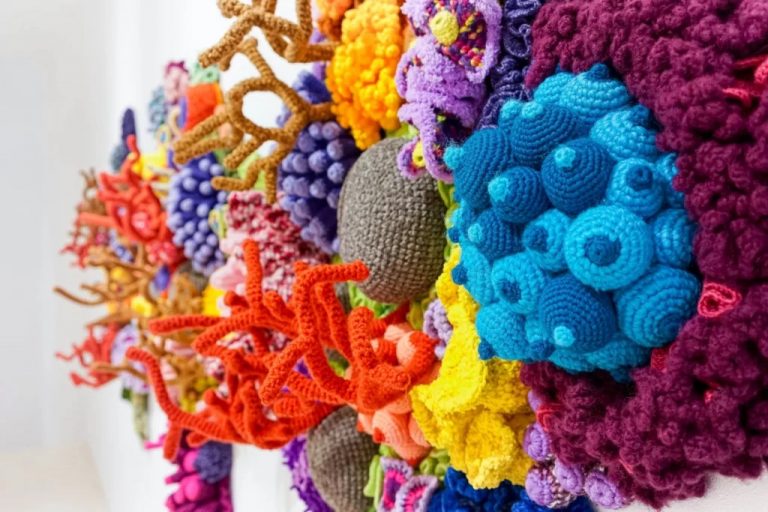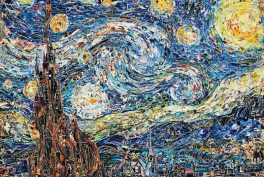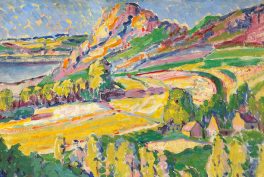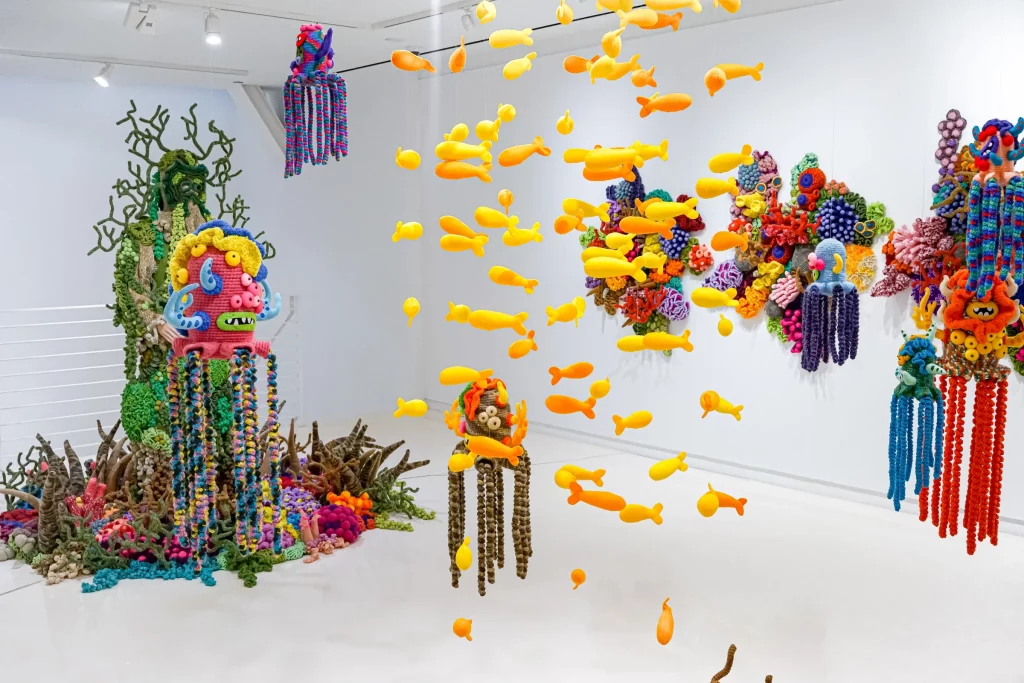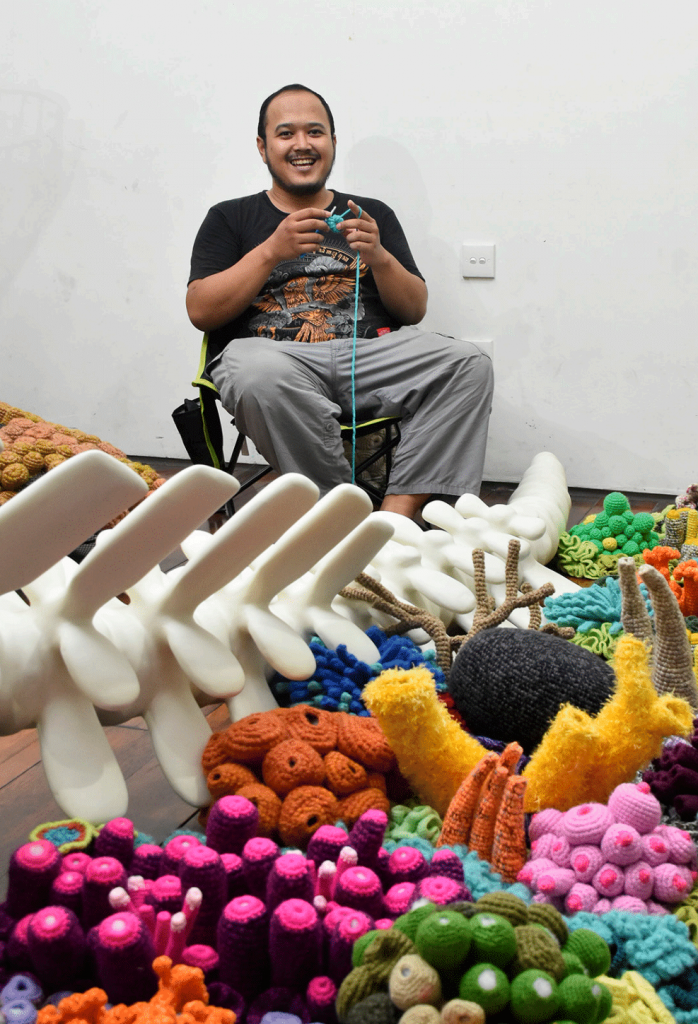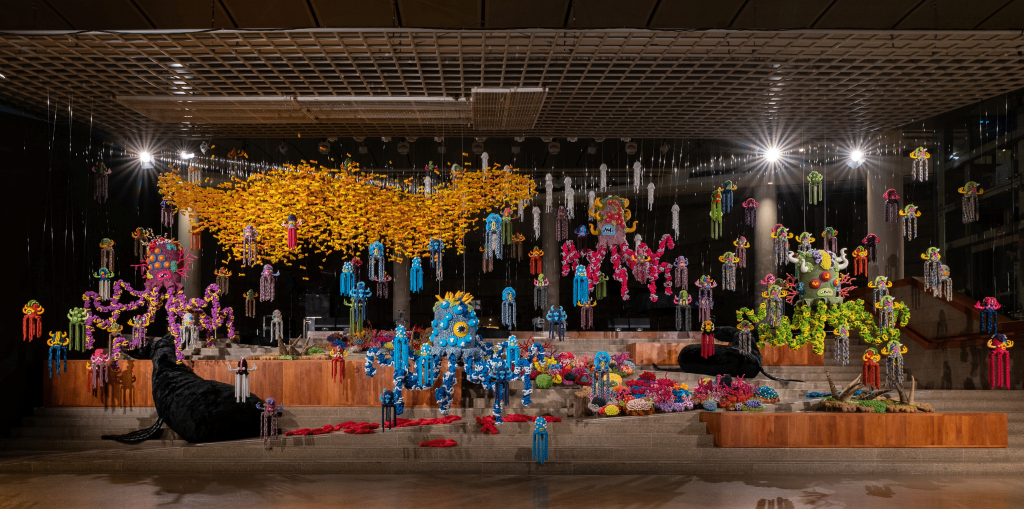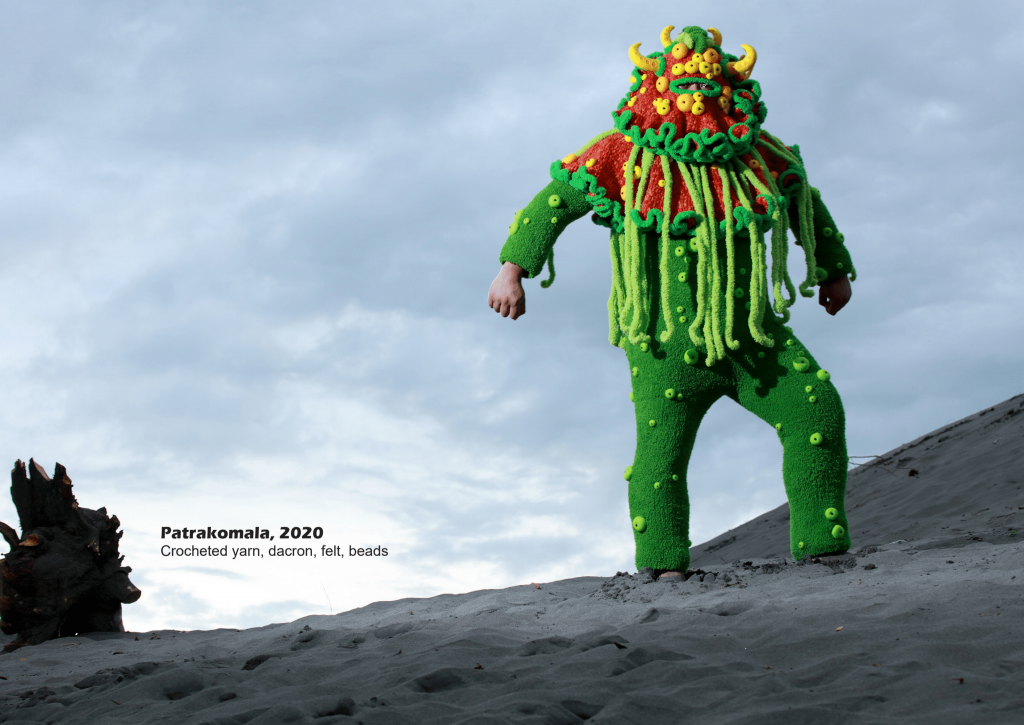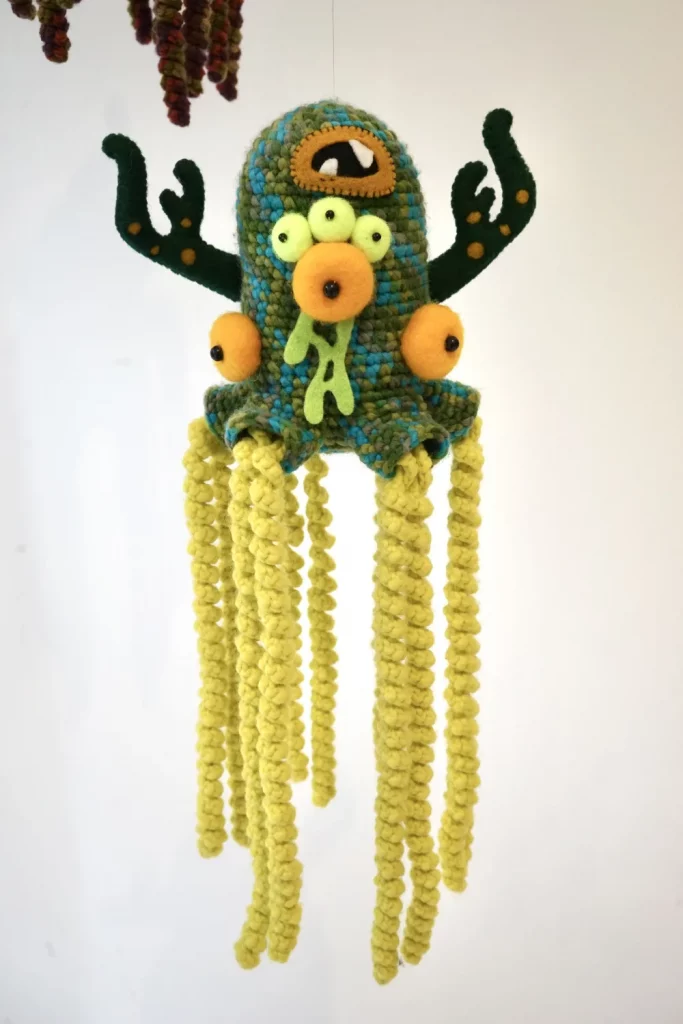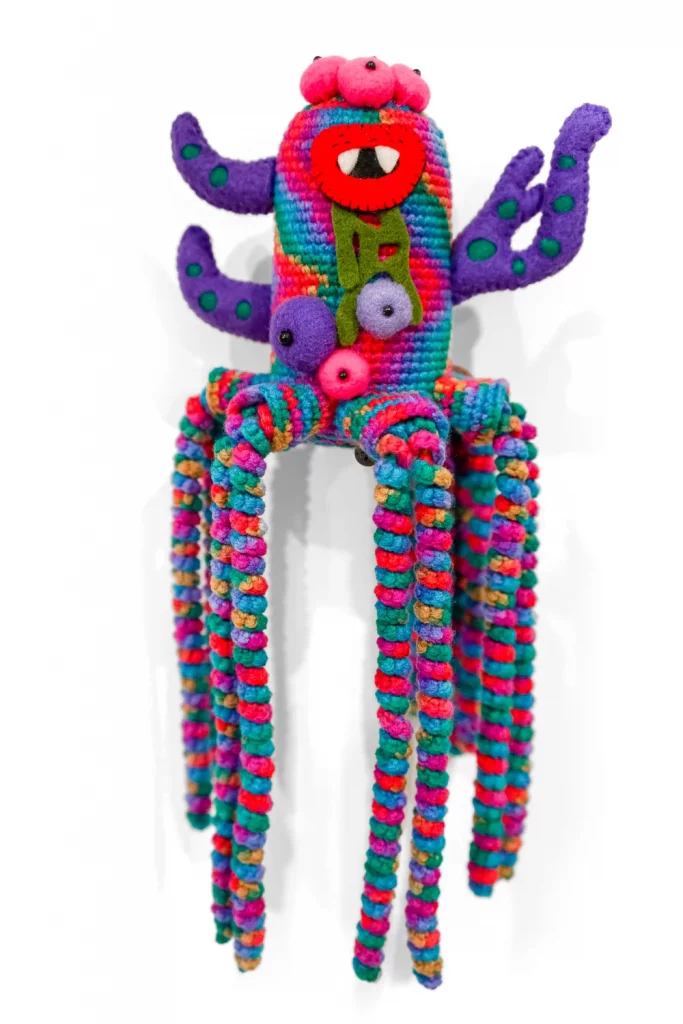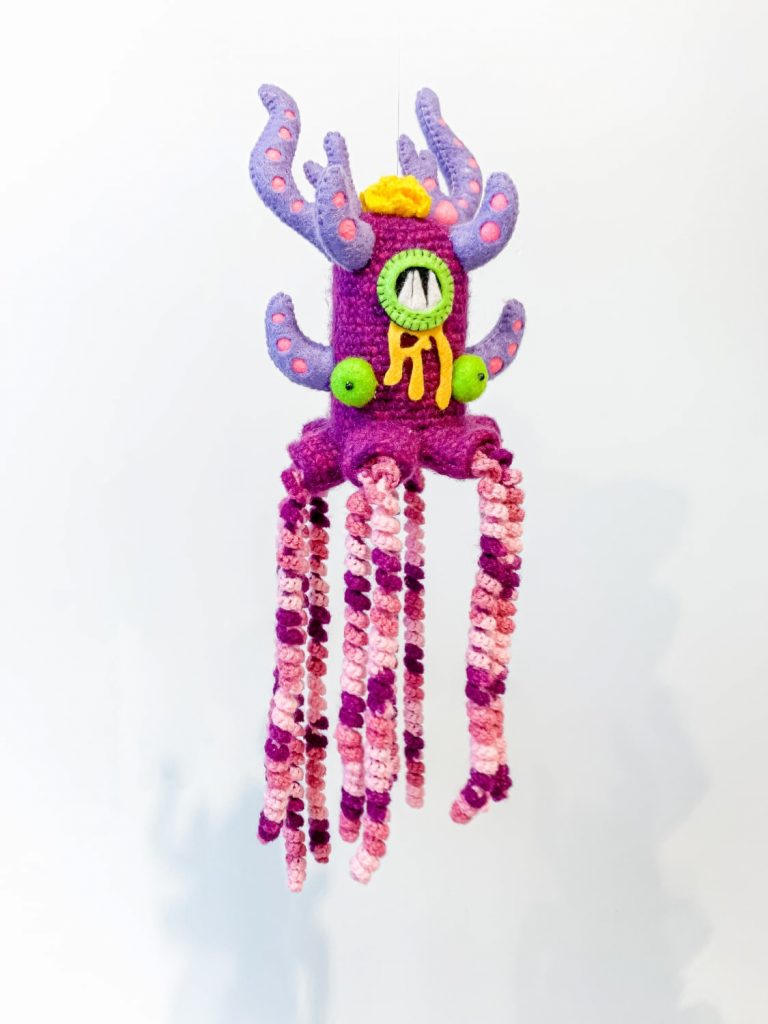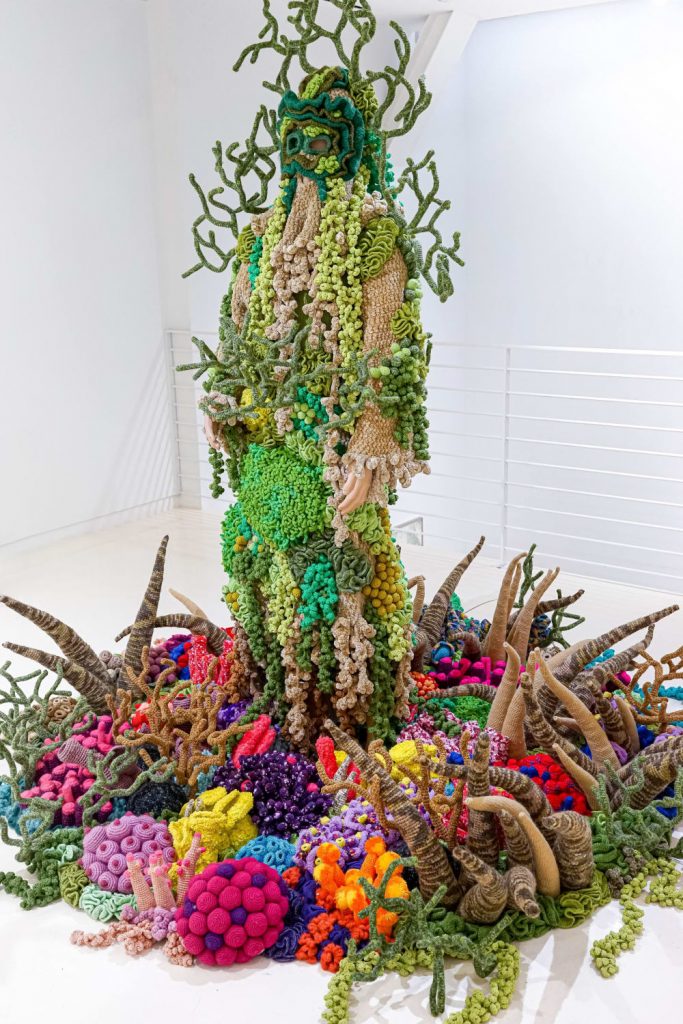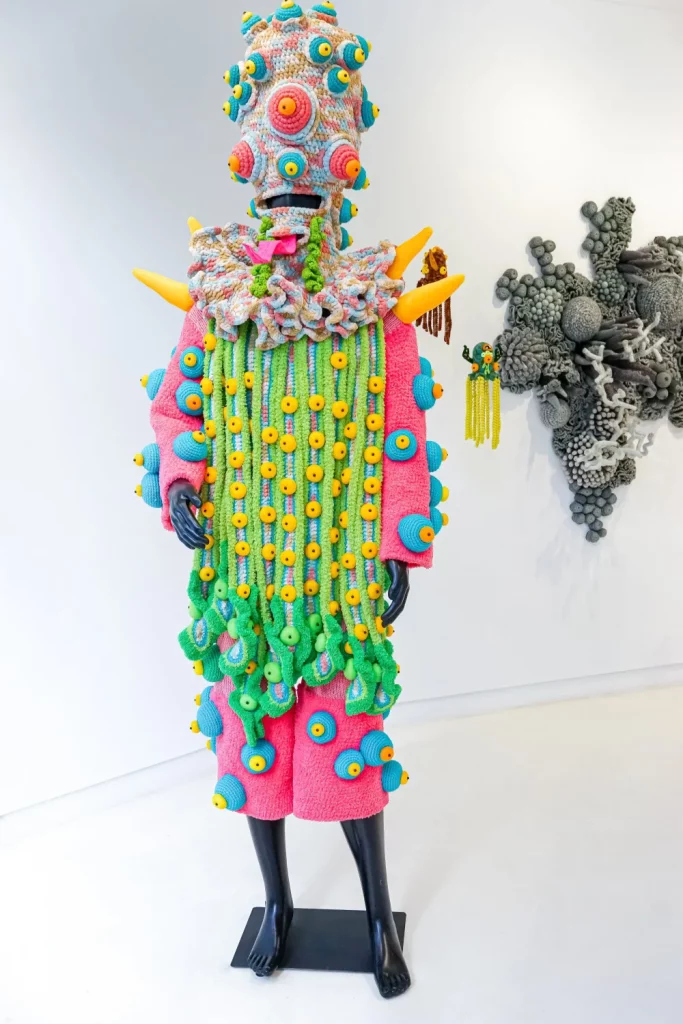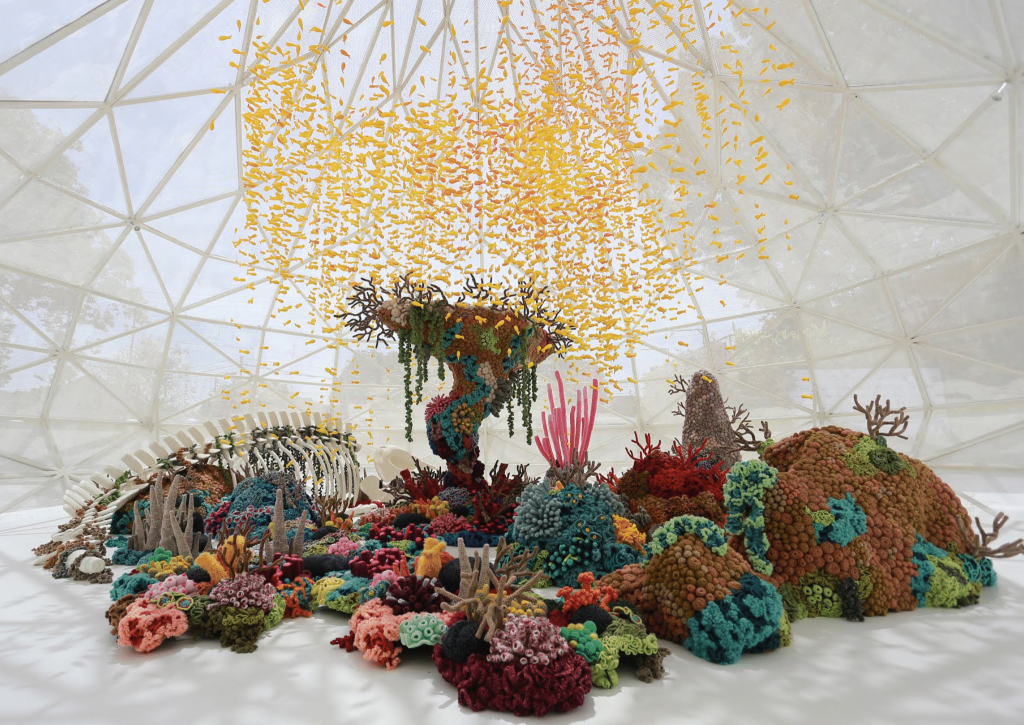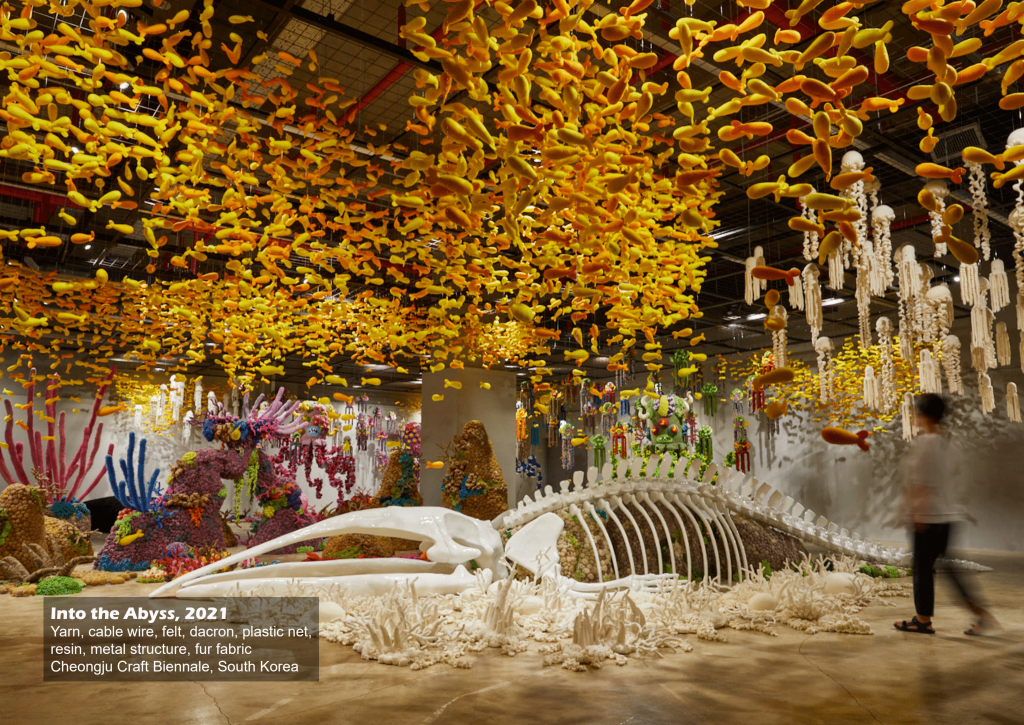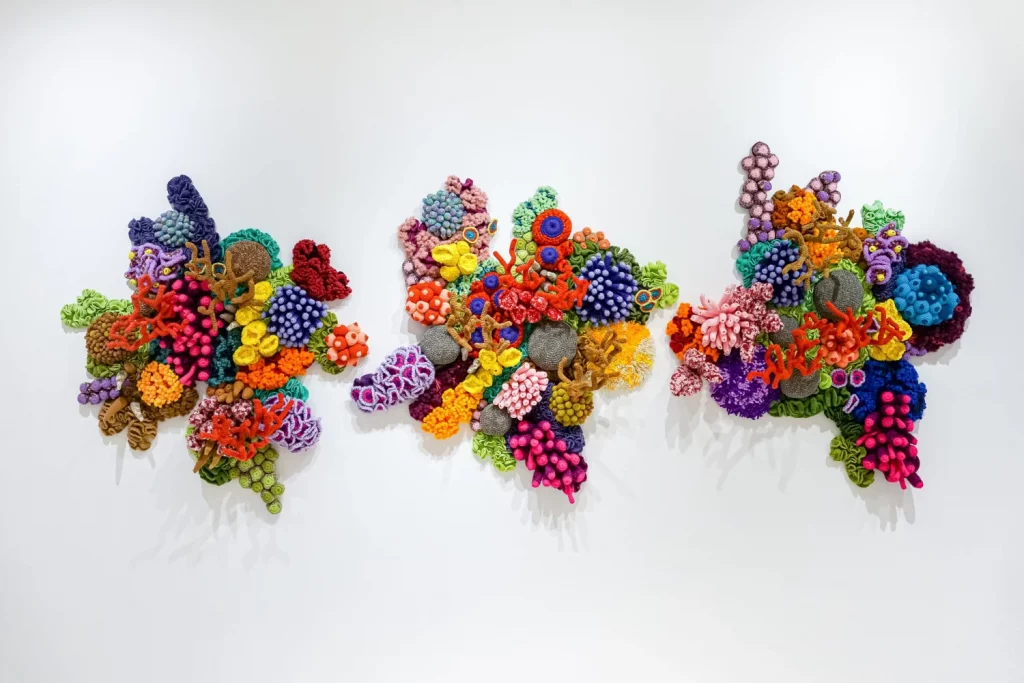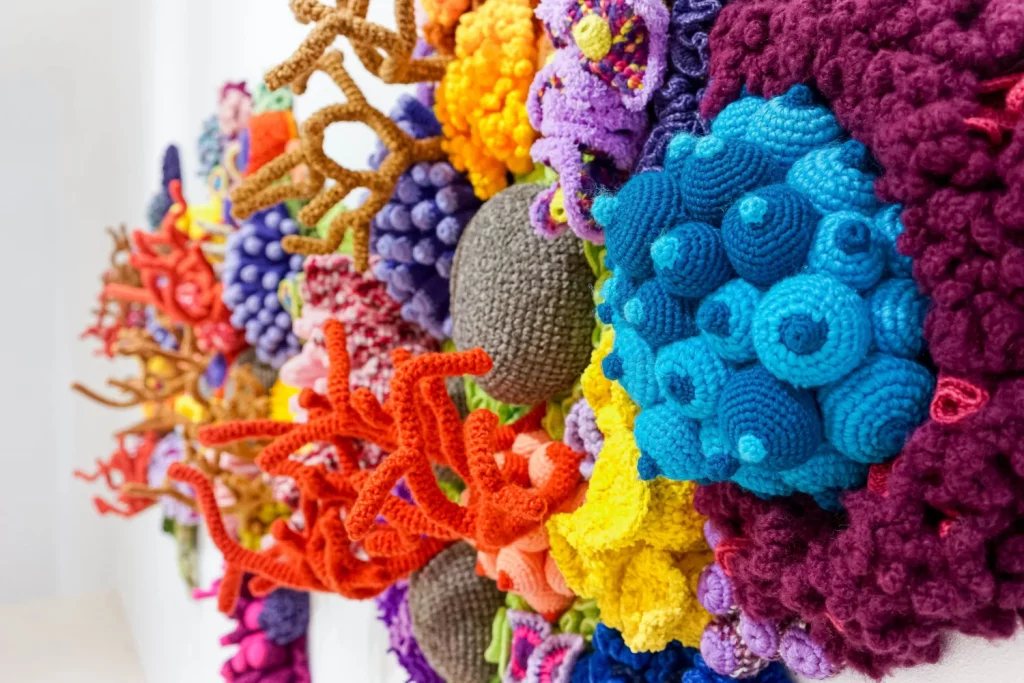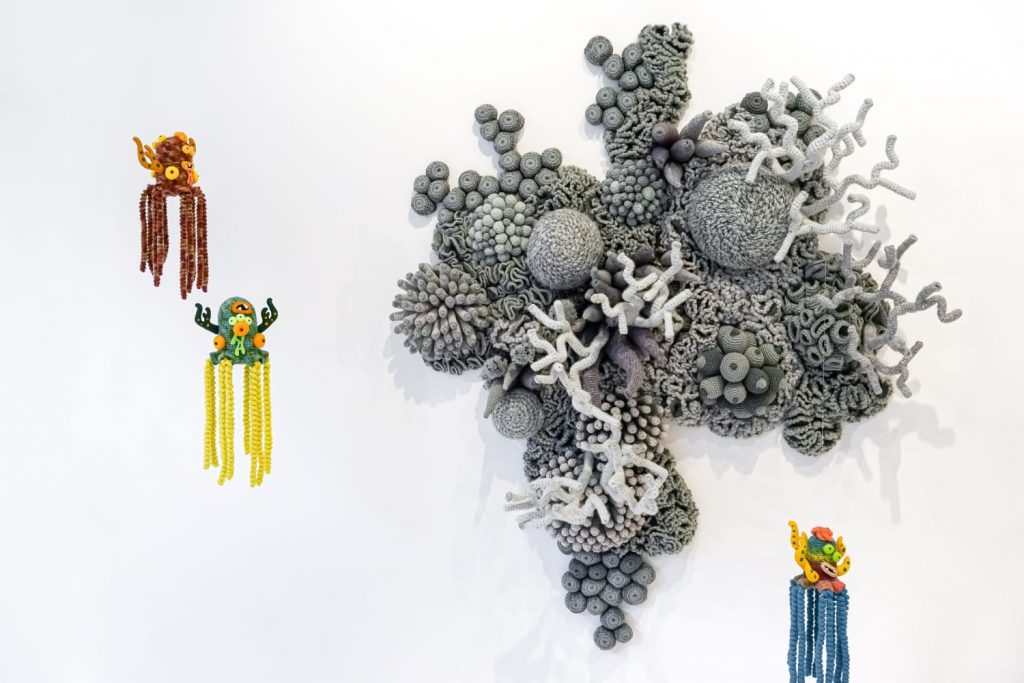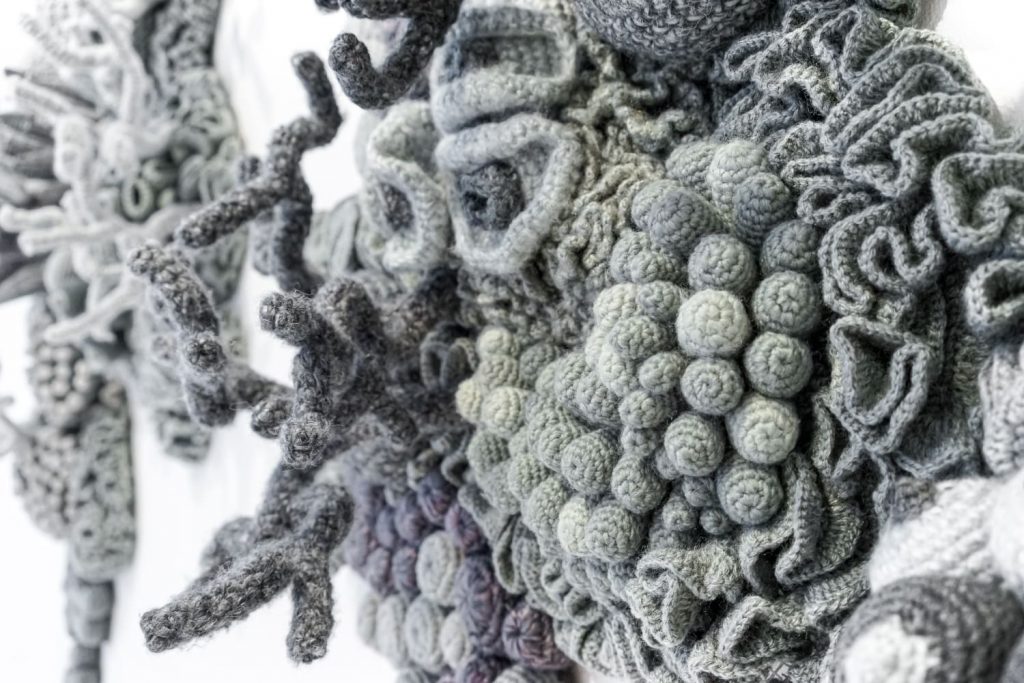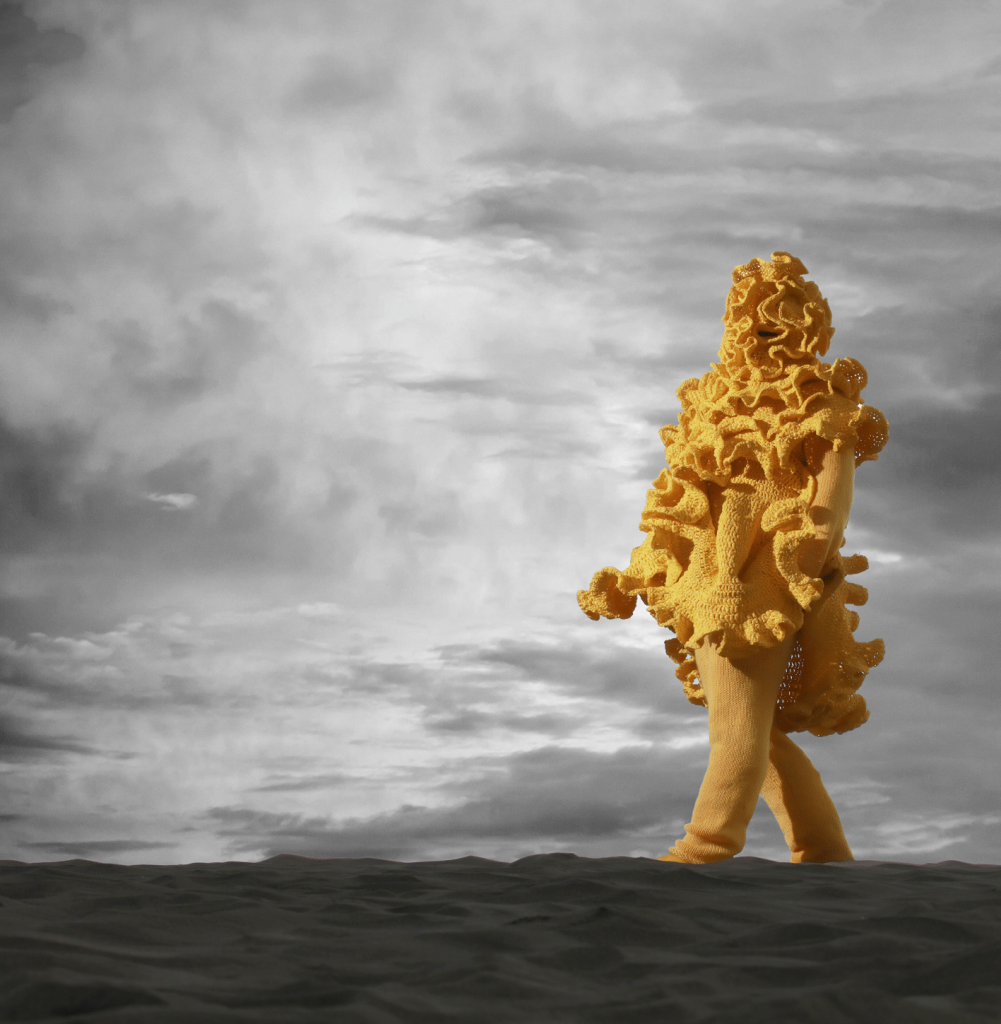This aspect is emphasized by his life-size costumes, which are exhibited on mannequins or worn by the artist himself in some of his performances. For example, two of his costumes were displayed at SAPAR, Nayanika and Adikara, but there was also a video of the artist’s performance. In the video, we can see Mulyana wandering in Indonesian landscapes wearing a bright yellow costume. Even in a disturbing and post-apocalyptic scenario with black and white temples, isolated stretches of sand, and abandoned buildings, Mulyana walks quietly and joyfully, almost dancing ironically.
In this way, the artist fully embraces his alter ego and investigates the topic of the mask: when he becomes The Mogus, he is not hiding some part of himself, but he is finding and accepting aspects of himself. From this point of view, The Mogus has both a personal and a universal meaning: it is the way the artist has found to be true to himself and to celebrate the diversity of every person.
